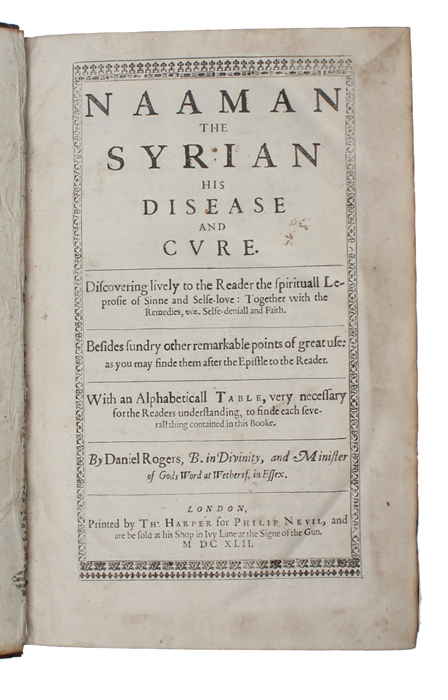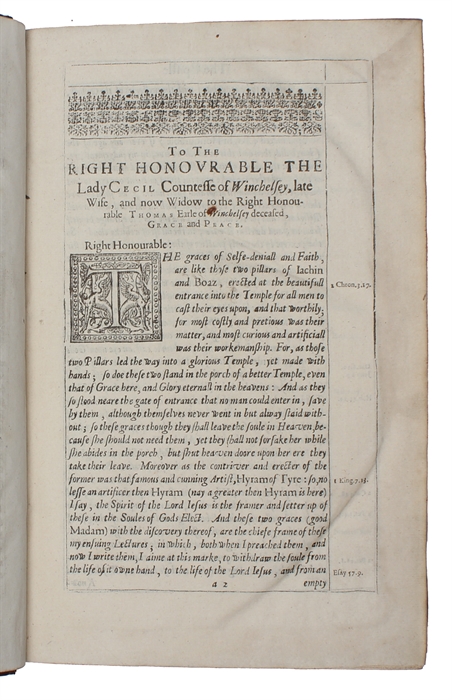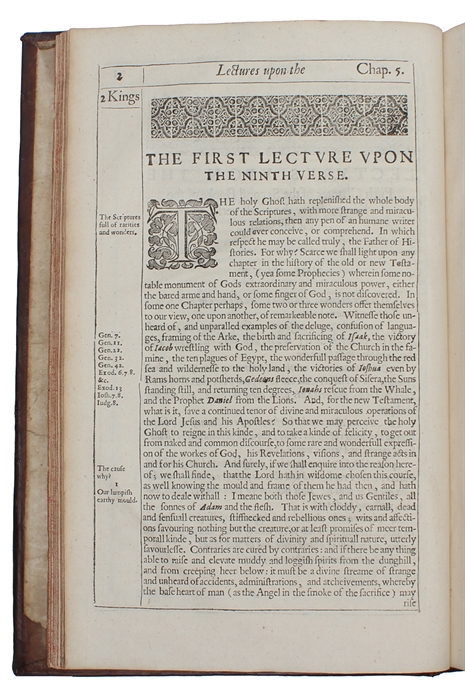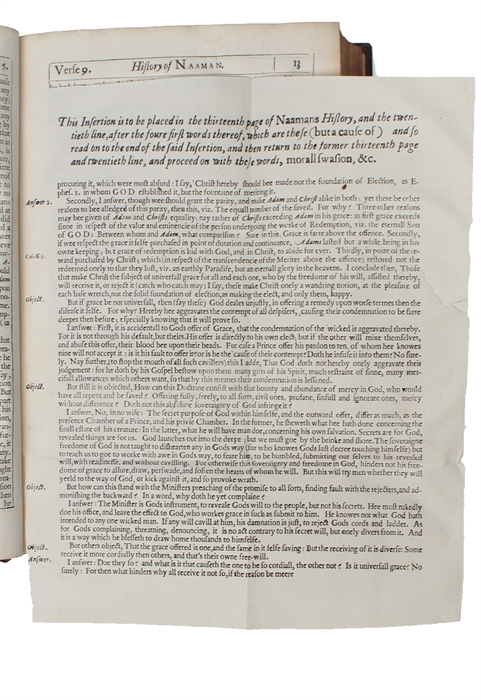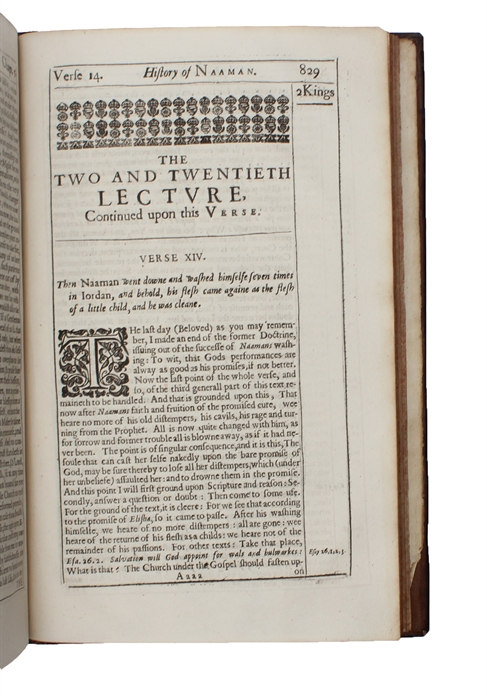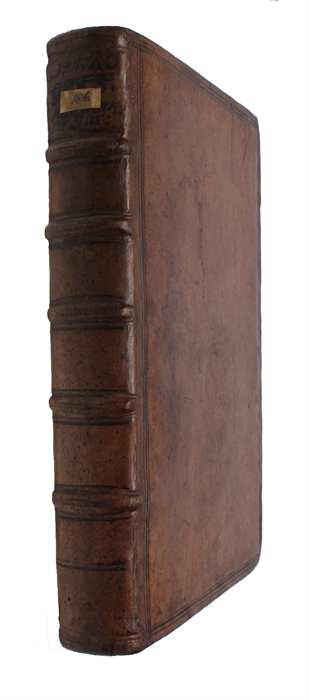ROGERS, DANIEL.
Naaman the Syrian his disease and cure. Discovering lively to the reader the spirituall leprosie of sinne and selfe-love: Together with the Remedies, viz. selfe-deniall and faith,
London, Printed by Th. Harper for Philip Nevil, 1642.
Folio (295 x 200). In contemporary full calf with five raised bands. Title in contemporary hand to upper compartment. Small paper label pasted on to upper part of spine indicating the inventory number in an estate library. Light wear to extremities and first leaves with marginal miscolouring, an overall nice copy. (16), 898 pp. + erratta leaf/commentary leaf inserted between p. 12 and 13. Pages 110, 121, 262, 519, 873, 897 incorrectly numbered 111, 221, 260, 59, 874, 896, respectively. No. 76-77 omitted in the paging.
Rare first edition of Roger’s exposition of the biblical story of Naaman the Syrian, which is found in the Old Testament, second part of the Book of Kings, fifth chapter. Naaman was a commander of the army of the king of Aram (Syria), and he is notable for being healed of leprosy through the prophet Elisha. According to the biblical narrative, Naaman was highly regarded by the king of Aram because of his military prowess. However, he suffered from leprosy, a serious skin disease. A young Israelite girl, who was captured and served Naaman's wife as a maid, informed them that there was a prophet in Israel who could heal Naaman. Naaman traveled to Israel with a letter from the king of Aram to the king of Israel, seeking a cure for his leprosy. The king of Israel, feeling powerless to heal Naaman, sent him to the prophet Elisha. Initially, Naaman was offended by Elisha's simple instructions to wash seven times in the Jordan River. However, at the urging of his servants, Naaman followed the instructions, and miraculously, he was cleansed of his leprosy. This story is often cited as an example of faith, humility, and the unexpected ways in which God works. Naaman's healing is attributed to his willingness to humble himself and follow the instructions given by the prophet Elisha. Daniel Roger (1573–1652) was the firstborn son of Richard Rogers from Wethersfield, Essex, born to his initial wife. Ezekiel Rogers, his younger sibling, was born in the same town. He pursued his education at Christ's College, Cambridge, under the guidance of William Perkins. Graduating in 1599, he served as a fellow from 1600 to 1608. After leaving the university, Rogers served as a minister in Haversham, Buckinghamshire. When Stephen Marshall, his father's successor in Wethersfield, relocated to Finchingfield, Rogers returned to Wethersfield as a lecturer, working alongside Daniel Weld or Weald, another Puritan. Despite personal discussions with William Laud and acknowledgment of his scholarship, he faced suspension by the archbishop in 1629 due to nonconformity. Although conforming clergy in North Essex petitioned on his behalf, he seemingly left Essex for a period. Rogers spent the latter part of his life in Wethersfield. During the fast day following Charles I's execution, he joined Giles Firmin, his neighbor and the vicar of Shalford, in mourning the king's death. In 1649, when the army's petition for tolerance, known as 'the agreement of the people,' reached Essex, Rogers, representing the Presbyterians, drafted and was the first to sign the Essex Watchmen's Watchword. This document protested against the tolerance of those who refused to sign the Solemn League and Covenant.
Order-nr.: 60644

